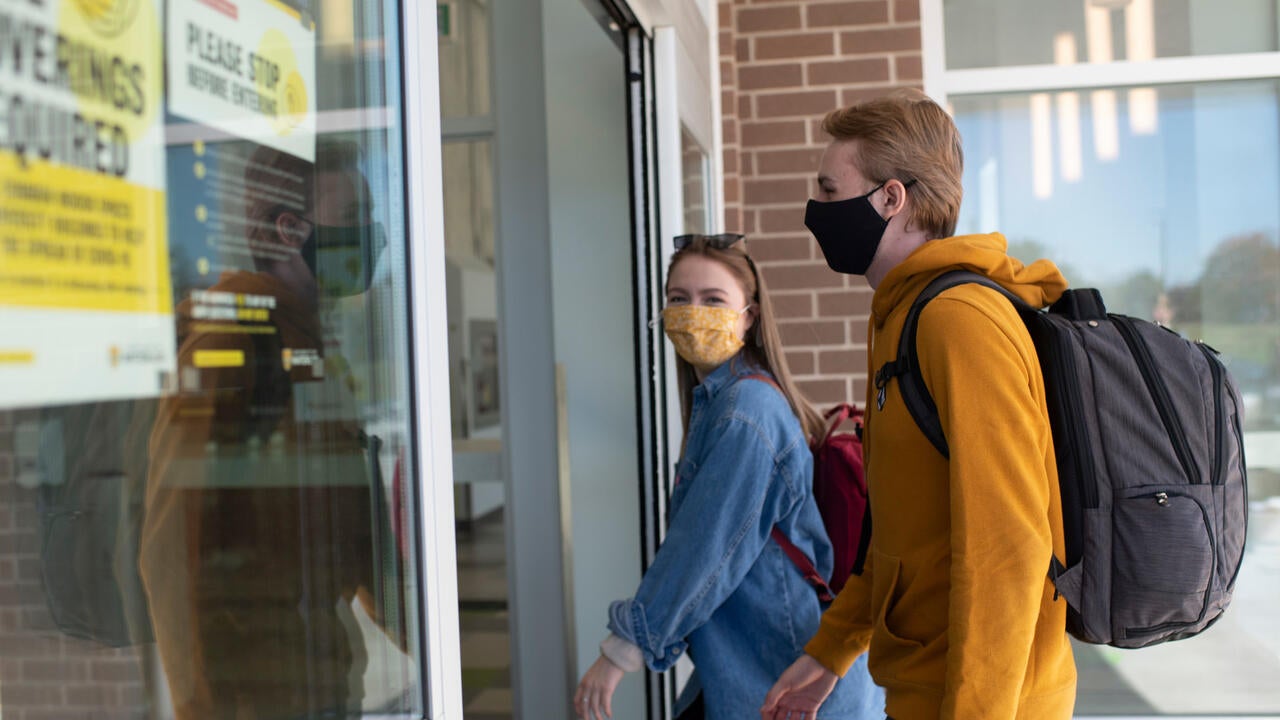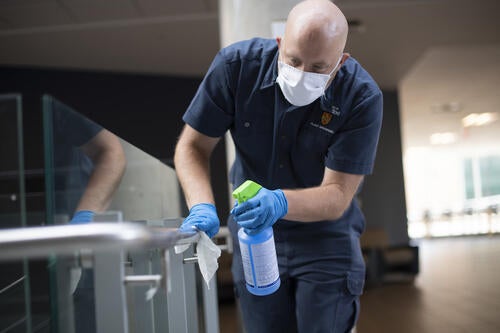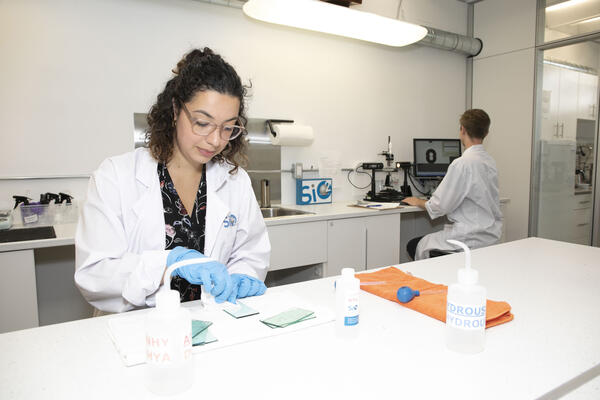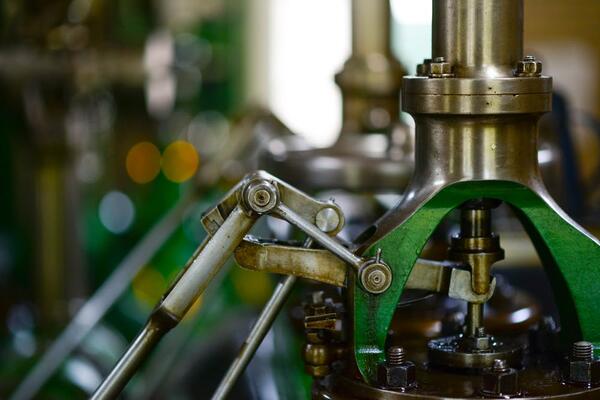
Waterloo upgrades ventilation systems across campus
Safety is the priority as we prepare for a gradual return in the fall

Safety is the priority as we prepare for a gradual return in the fall
By University RelationsWhile most COVID-19 infections are spread through close contact with an infected person, in some cases, they can occur through extended airborne exposure, making proper ventilation essential. For the past year, Waterloo’s mechanical design teams and trade staff have been inspecting the heating, ventilation and air conditioning (HVAC) units on campus, making retrofits to support higher levels of filtration and reprogramming our Building Automation Systems (BAS) to accommodate building occupancy and new guidelines for health and safety.

> Stepanka Elias
> Executive Director, Plant Operations
“We’ve had more than 350 trades, custodial and grounds staff on our campuses daily to ensure that our campus spaces remain safe and functional,” says Stepanka Elias, executive director of plant operations. “Buildings require a lot of upkeep whether people are in them or not, from temperature control and ventilation to electrical and plumbing. Based on the advice of public health officials and other professional associations, we’ve been modifying cleaning priorities, making upgrades to our HVAC systems and focusing on preventative maintenance measures.”
Waterloo’s campuses have 63 major buildings with 398 HVAC units, supporting a variety of research, teaching and staff and student activities. Since November 2020, every building has been retrofitted to accommodate MERV13 filters. MERV13 filters are recommended by the American Society of Heating, Refrigeration and Air-Conditioning Engineers and over the pandemic have become standard across the industry because they are more effective at filtering small droplets and particles that travel through the air (at least 85 per cent efficient at capturing particles in the 1 µm to 3 µm size range).
Elias says that the Plant Operations team is striving for improvements every day. When asked about filters that go above and beyond current standards, she says that MERV14 may provide slightly better performance, but are physically too large for our ventilation systems. HEPA filters, although very efficient, may strain ventilation systems and reduce air flow.
Air exchange rates in campus buildings vary, for example, wet science and engineering labs are typically supplied with 100 per cent outside air and have high air exchange rates to limit exposure to various chemical and biological agents. This makes lab environments inherently safe when it comes to filtration of virus particles. Other spaces such as dry labs and classrooms have been designed with comfort in mind and therefore have lower air exchange rates. The mechanical engineering team is reviewing the air flow for all classrooms in preparation for fall.
“Everybody has worked hard through the stress of the pandemic and many employees have taken on new COVID-related tasks” says Elias. “There’s a feeling of UWaterloo pride and community spirit as we all band together to maintain our campuses, keep people safe and prepare for the gradual return of our students, faculty and staff in the fall.”

A member of the Plant Operations team disinfects high-touch surfaces in the STC building.
In addition to upgrades to ventilation systems across campus, campus cleaning, especially to high touch surfaces, is a priority that is being reviewed and modified regularly by the Plant Operations team. Common areas, classrooms and workspaces on campus have occupancy limits and have been modified to allow for safe physical distancing. Plexiglass has been installed in service areas and hand-sanitizing stations have been placed at building entry points and elevators. Clear and visible signage will also help inform and direct those returning to campus in the fall.

Read more
Many COVID-19 cases have been reported through community transmission, with 81 per cent of COVID-19 cases in Canada likely spreading this way.
What can be done to track the spread of COVID-19 on surfaces in our community?

Read more
New research is underway to develop a coating that will kill the COVID-19 virus immediately upon contact with any surface. The antiviral coating could be applied to all personal protective equipment and high-touch surfaces, greatly reducing the risk of community transmission of the virus.

Read more
Canada’s post COVID-19 economy will see more automation, particularly in the retail and manufacturing sectors.
The University of Waterloo acknowledges that much of our work takes place on the traditional territory of the Neutral, Anishinaabeg, and Haudenosaunee peoples. Our main campus is situated on the Haldimand Tract, the land granted to the Six Nations that includes six miles on each side of the Grand River. Our active work toward reconciliation takes place across our campuses through research, learning, teaching, and community building, and is co-ordinated within the Office of Indigenous Relations.